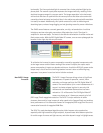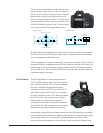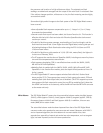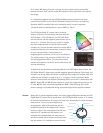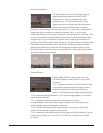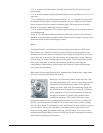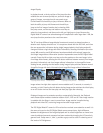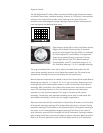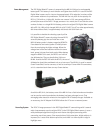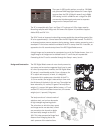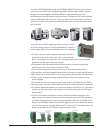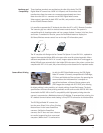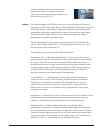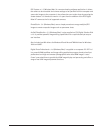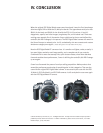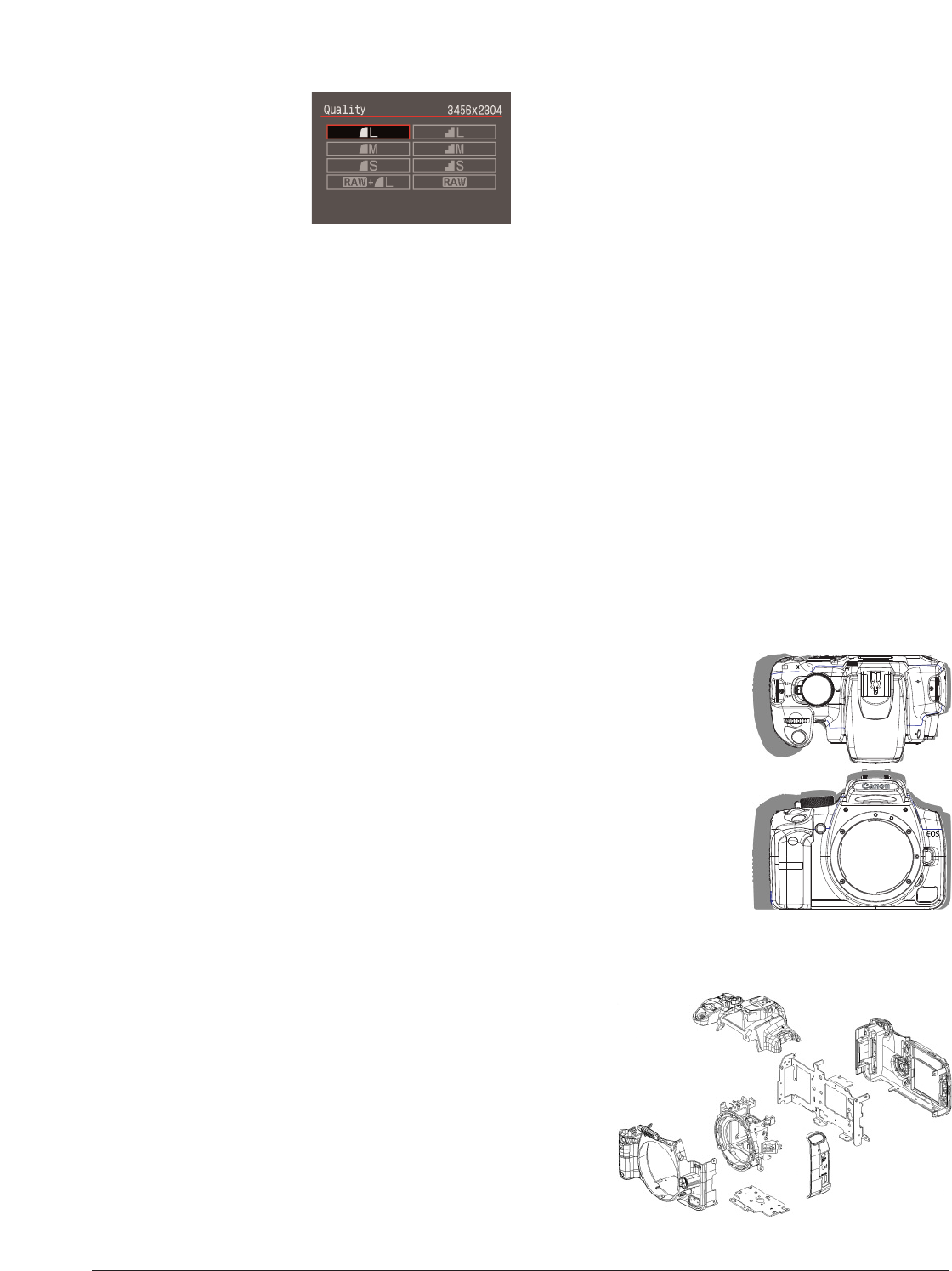
III. DISCUSSION 21
Design and Construction
Ther
e are six JPEG quality options, as well as .CR2 RAW
on
ly (the new RAW image type featured in Canon digital
c
ameras from the EOS-1D Mark II onward) and a RAW+
JPE
G setting in which a RAW file and a Large/Fine JPEG
ar
e recorded simultaneously and saved as separate
im
ages on the CompactFlash card.
The XT is compatible with Type I and Type II CF cards up to 2 GB or larger capacity.
Recording complies with Design rule for Camera File System 2.0 (revised to support
Adobe RGB) and Exif 2.21.
The DIGIC II and an improved card-writing process enable the data writing speed of the
XT to be approximately 3.5 times faster than the EOS Digital Rebel camera. The DIGIC II,
an improved system process sequence during startup, shorter startup processing, and a
revamped CF card access method contribute to the XT’s startup time of 0.2 seconds, as
opposed to the 2.8 second startup time of the EOS Digital Rebel camera.
A single image can be protected or unprotected, as set in the Playback menu, item 1. A
single image or all images can be deleted from a CF card if they are unprotected.
Formatting of the CF card is controlled through the Setup 1 menu, item 6.
The EOS Digital Rebel camera is not a chunky camera by
any means and no one has suggested that it was in need
of a diet. By comparison, however, the EOS Digital Rebel
XT camera is considerably smaller. From a distance, the
XT is stylish and compact; in hand, it is delightful.
Compared with its predecessor, the width of the XT is
15.5 mm smaller; the height is reduced by 4.8 mm and
the thickness of the body is 8.4 mm less. The weight has
been reduced by 2.5 ounces/70 grams The body alone
weighs 17.1 ounces/490 grams With a battery, a CF card
and the EF-
S 18-55mm standard zoom lens, the camera
weighs just 1.5 pounds/720 grams.
The body consists of a chassis made of
stainless steel, and a mirror box made
of high-strength engineering plastic.
The mirror box, to which the lens mount
and image sensor are attached, is fixed
very securely to the chassis to obtain
the same body strength as the EOS
20D. This helps prevent the flange focal
distance from changing due to the
static pressure of the attached lens.



